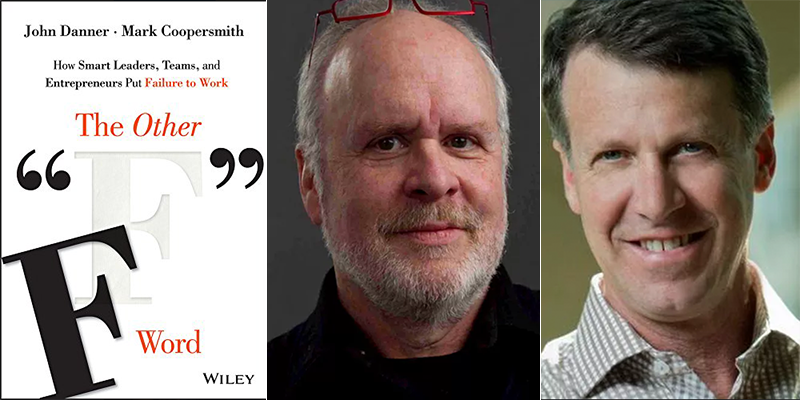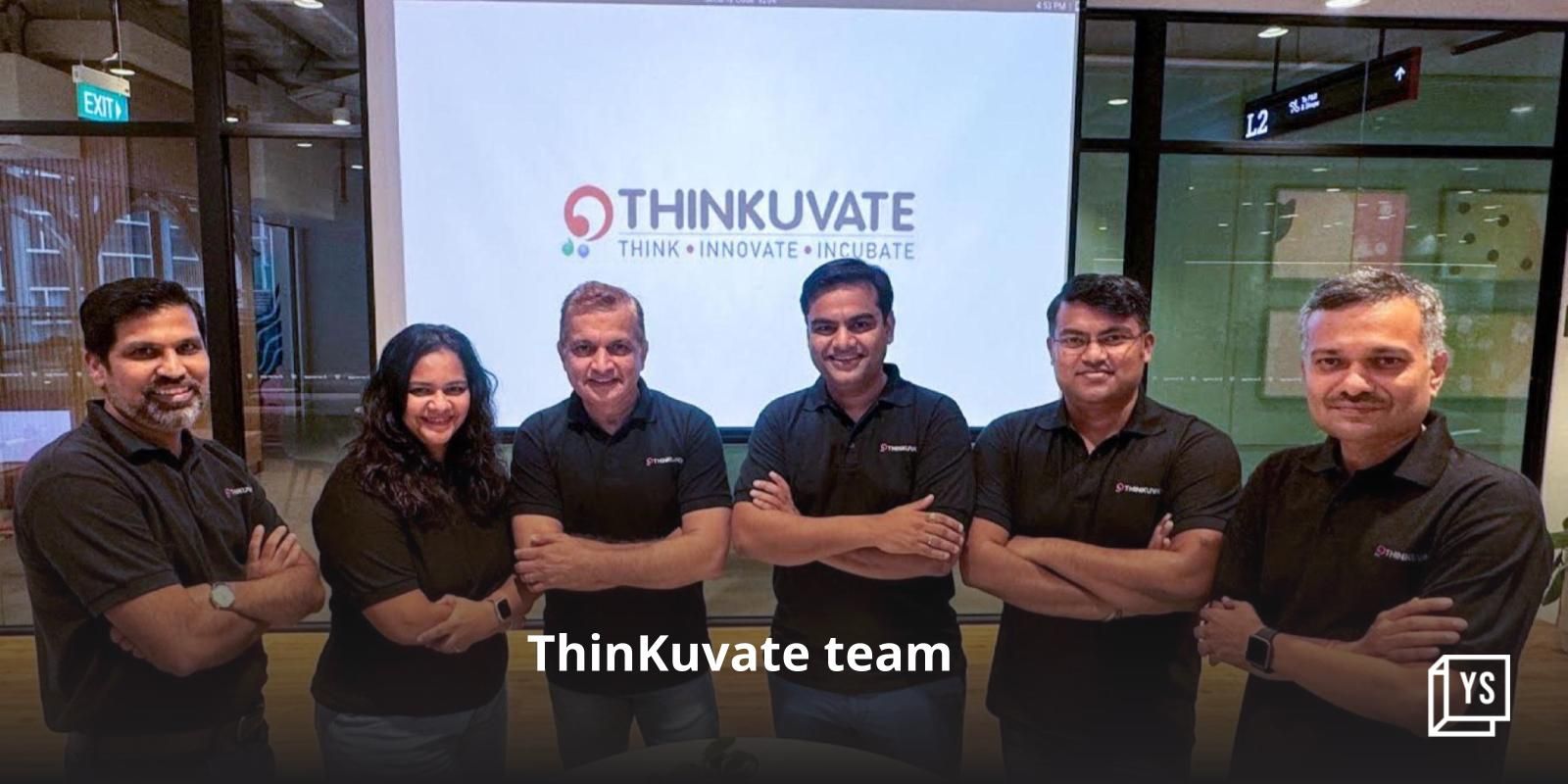Failure is grief but not ‘game over’ – authors John Danner and Mark Coopersmith on how to put failure to work
The authors of this bestselling book on failure lessons offer a wealth of tips for entrepreneurs on how to react and rebound in the face of failure.

Frameworks on how to embrace failure as a means to learn, grow, and innovate are explained in the insightful book, The Other “F” Word: How Smart Leaders, Teams and Entrepreneurs Put Failure to Work by John Danner and Mark Coopersmith (see my book review here).
John Danner is a management consultant with extensive experience in industry and government and teaches at UC Berkeley and Princeton. Mark Coopersmith has worked in the startup and corporate sectors and is a Senior Fellow at the Haas School of Business at UC Berkeley.
The core of the book is a seven-stage framework on how to harness failure, called the Failure Value Cycle: respect, rehearse, recognise, react, reflect, rebound, and remember.
The authors join us in a chat on how failure lessons can be taught and interpreted, examples of leaders who share failure stories, cultural attitudes towards failure, and tips for startup founders on negotiating failure experiences and bouncing back to success.
Edited excerpts of the interview below:
YourStory: What is your current field of research in entrepreneurship and the role of failure?
John Danner & Mark Coopersmith: Between the two of us, both individually and also for programmes we run together, every year we address, teach, coach, mentor, invest in, and advise thousands of entrepreneurs and corporate executives. Almost all of them are seeking more innovation and growth for their ventures, which range from startups to global enterprises.
Some of the frameworks and tools are generally effective across the entire spectrum, while others are more specific to size and stage of growth. Taken as a whole, much of our work seeks to identify and categorise common patterns of success, and failure, in each of these arenas.
As members of the professional faculty at UC Berkeley, most of our work is based on practical applications and circumstances in the market, rather than traditional academic research.
YS: How big a role do academics play in entrepreneurship? Can entrepreneurship really be formally taught as you do in your courses, or is it something intrinsic in humans?
JD & MC: Yes, it can be taught – but in our experience how it is taught can be as important as what is taught. Our work cuts across the academic, startup, corporate innovation, investment, board, and other realms. Even in our classes at UC Berkeley and Princeton, we employ real-world case studies, simulations, and activities to bring the Darwinian nature of Silicon Valley and most markets into the classroom.
We firmly believe that entrepreneurship is not a topic that can be effectively taught by readings and case studies alone. For the insights, frameworks, processes, and tools to fundamentally "stick," this is a topic that must be experienced at a deeper level, first-hand. Or, as we say it, with a “heads in, hands on, feet first” attitude.
In our most effective and immersive curriculum, our students form startup teams, develop a new venture concept, investigate it in depth in a target market, and undertake the real-world steps necessary to comprehensively develop the opportunity and advance it to the next stages. In fact, coming out of our classrooms and these types of programs, we have launched more than 50 successful ventures from our "workshop for startups" curriculum, and related courses.
One of the most important elements of understanding entrepreneurship is developing a better understanding and skillset in how to manage risk from the perspectives of both entrepreneurs and investors. This concept of "derisking" plays a key role in our classroom activities and real-world assignments.
The more effectively an aspiring entrepreneur can understand how to derisk a venture (or pre-emptively “fail” before the market definitively fails them), the more successful they will be in deploying capital and other resources, and advancing their proposed venture. It is through approaches and methodologies such as this that we can help create better entrepreneurs in the programs that we run.
YS: How was your book received? What were some of the unusual responses and reactions you got?
JD & MC: This is a tale of two stages. Before publication, it was tough. One of the early responses we received from some of the publishers was "why would we want to write a book about failure?" Essentially we failed to communicate why failure was such an important topic. Some publishers felt the topic was so depressing, that they quickly passed on the concept.
Fortunately, a number of others, including John Wiley & Sons - which ultimately published The Other “F” Word as one of their lead business titles - were sufficiently intrigued by and interested in our research, interviews and case studies, 7-step Failure Value Cycle, and recommendations, that we received multiple offers to publish our book.
Once our book came out, however, we’ve been delighted by the response. It became an Amazon bestseller, and we have been doing speeches, advising clients and working with students on this topic ever since. We’re grateful for the broader acceptance of this important topic and pleased by our early role and voice in helping bring this about.
YS: In the time since your book was published, what are some notable new examples you have come across of failure learnings?
JD & MC: Learning from failure has become much more popular and the stigma of addressing this topic has largely been removed, as many recent books and articles attest. Also, many global leaders are now much more open in sharing their failure stories, and lessons learned. Notable examples include Jack Ma of Alibaba and Jeff Bezos of Amazon, who are candid and outspoken about the importance of understanding this topic.
YS: Most of the case studies in your book feature startups and companies - what are your findings with regard to failure in governments and non-profit organisations?
JD & MC: We did not have time to delve into either arena in any depth. John has worked in both settings as well as business and has spoken often on innovation and failure with various government audiences. Suffice to say we see similar taboos about failure there, with exacerbating factors like frequent election cycles, insufficient funding, murky priorities and often the glare of media attention.
YS: How should startup founders go about formalising their failure value cycle in the early stages? They seem to be too busy with other challenges!
JD & MC: One of our basic suggestions is for founders and their teams to engage in discussion and have a broader awareness of how failure may insinuate itself across the startup venture and lifecycle, including a number of specific activities when founders and their teams need to pay particular attention. Something as simple as posting a copy of the Failure Value Cycle in the office may help attune everyone to this reality.
Also, it's important for founders and other business leaders to talk about some of their own failures, what they have learned from those in the past, and how they have put that knowledge to work. This brings the topic out of the closet into the open and allows others to engage productively with it. In our book, we share how Chris Michel, a very successful serial entrepreneur, does this effectively,
Since startups are primarily a real-time experiment in seeking to discover product-market fit and a business model that works, when startups encounter failures in these experiments they need to carefully look for insights that can lead to a better set of outcomes the next time around. When running these real-time experiments, startups are essentially putting forth a hypothesis, which is either proven or, in the case of failures, disproven which also provide valuable data points to develop new sets of hypotheses and experiments that may have positive results.
Startup entrepreneurs also need to ensure that when they do encounter failures, they do so early enough that the failures are not potentially lethal. Embracing regular feedback from the marketplace is just one of the effective early indicators.
All these elements are part of becoming a more failure-savvy leader. There are many examples of this in our book, including how Instagram emerged from a much broader and more ambitious failed venture called Burbn.
YS: How should innovators strike that delicate balance between ‘stick to your vision’ and ‘adapt to a changed world’?
JD & MC: You have to straddle both sides of this street, i.e., continually assess what the right balance is between focus and flexibility. Too much focus and you run the risk for falling (and staying) too much in love with your own product, strategy and business model while customers and technology have moved elsewhere.
Too much adapting and you can end up in a “perpetual pivot” that confuses both your customers and employees as you hop from one strategy to another. The key is creating a team and culture that can have this debate frequently and be willing to course correct as appropriate.
YS: Is there such a thing as the ‘ideal age’ for an entrepreneur, or can the creativity bug strike you at any time?
JD & MC: No age has a monopoly on either creativity or entrepreneurship. There are successful examples in almost every decade from teens to octogenarians. The important thing is to just get started whenever and however the spirit moves you.
YS: It’s one thing to fail with a product, and a bigger dimension to fail with a company. How should founders regroup in these two situations?
JD & MC: In both settings, resilience is the order of the day. There’s a phrase we like, called “graceful failure.” It means planning and designing products and projects with an eye towards recoverable failure, so a team and organisation can learn what needs to be learned before their resources run out.
Acknowledgement and transparency come first. People need time to “grieve” when failure happens, given the frustration, exhaustion and embarrassment that too frequently accompanies failure in business. So commiseration is a great first response, far better than denial or the “blame and shame” response of some organisations.
Finally, occasionally a genuine apology is called for. People survive product and business failures all the time, and can be the wiser because of it. And customers, employees and even investors often forgive business failures. So entrepreneurs need to have the honesty – and humility – to own up to failures along the way, learn from them and be willing to get back in the game.
YS: What are your findings with respect to acceptance of failure in societies outside of the US, for example, Europe and Asia?
JD & MC: We can offer only anecdotal observations here, but our experience in working with executives and students on and from every continent strongly suggests that fear of failure and, of course, failure itself is a global reality. While the US and Silicon Valley are often held out as exemplars of “second chance” societies, neither has a monopoly on wisdom in doing what our book is all about – turning failure from regret to a strategically valuable resource.
Every culture obviously has its own peculiarities that need to be recognised and respected. But we have found that many of our suggestions have been put to work by non-American readers.
YS: How would frameworks of frugal innovation and lean startup connect with your 7 Stages framework?
JD & MC: They are both complementary to our Failure Value Cycle. Frugal innovation itself has a built-in failure savviness to it, in that it’s about optimising a product’s usefulness by ingeniously using fewer resources. That, in turn, means that a frugal entrepreneur can afford more experiment-learn-apply cycles of discovery without exhausting his or her resource “runway.”
Lean Startup doesn’t focus as much on frugality in design and innovation per se. It’s more about the business startup experience. But its spirit and processes are kindred spirits to both jugaad and our framework.
Our work is not limited to either startups or innovation. It is intended for, and has been used by, both startup entrepreneurs and executives in very large established enterprises.
YS: What is your next book going to be about?
JD & MC: John wrote a more recent Wall Street Journal bestseller with his Princeton colleague, Chris Kuenne. Called Built for Growth, it focuses on the personality characteristics of highly successful entre- and intrapreneurs. It is a lead title with Harvard Business Review.
We’re not yet sure whether we will do another book soon, but continually discuss and debate several book-worthy topics. Stay tuned!
YS: What is your parting message to the startups and aspiring entrepreneurs in our audience?
JD & MC: Think about your startup as an ongoing series of real-time experiments. Keep putting forth a variety of options and hypotheses and iterating until you find a solution that the market embraces.
Don't process your failures as "game over," but rather as part of a rigorous startup methodology wherein you gather more information at each step along the way helping you arrive at a more insightful, inspired, sustainable, and ultimately successful set of outcomes.

Also read: Fail fast, learn fast – four lean model tips for startups











